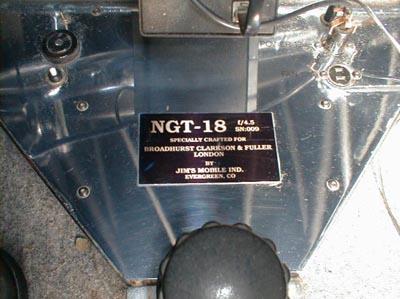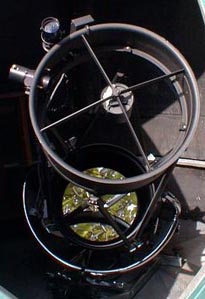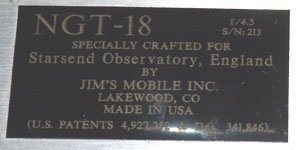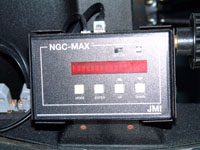


During the 1980's amateur astronomy had become polarised into two almost distinct cultures. Those taking photographs using gas hypered films and long exposures, and those who wanted to escape the light pollution and see the universe, not through film, but actually see with their own eyes.
For the first group an equatorially mounted telescope with precision tracking capability was the equipment of choice. For the second group portability and aperture were king. Dobsonian mounted leviathans were the order of the day.
The NGT was designed to fit the middle ground. As light pollution worsened there was an increasing need for portability and precision tracking from the astrophotographers. The first CCD's were appearing, their potential was awesome, but like more conventional camera's they needed to be tracked to follow the motion of the stars.
In its May 1989 issue Sky and Telescope carried an advertisement from Jim's Mobile Industries (JMI) for a radical new telescope, the 'EpocsElet' (it's telescope spelt backward). The principal features of the telescope were portability; a precision equatorial mount; and a large (18") aperture. In the following year JMI (who work out of Evergreen, Colorado) changed the name (to the Next Generation Telescope or NGT) and refined the telescope design. The first production units of the NGT appeared in March 1990 with Serial number 9 being delivered to its new owner (Chris Jones) in the UK on 27th July 1990.
From 1990, to 2004 when production ended, just over 200 NGT 18 units came out of the JMI workshops. One of the last units to be produced was SN 213 delivered on 25th January 2003 to same home as SN9.
Over the years there have been successive modifications and upgrades, most of which have been to the telescope electronics. The split ring mount and optical assembly have remained essentially the same to the present day. A testimony to the strength of the basic design of the instrument.

